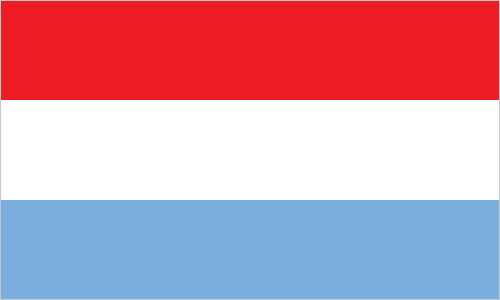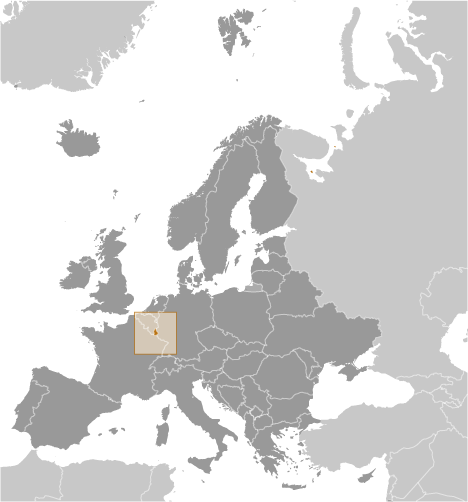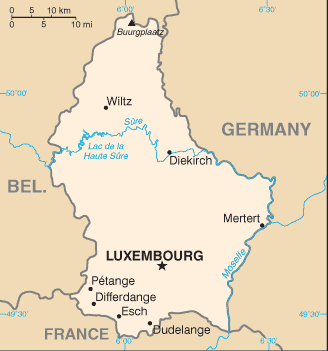|
Economy - overview:
|

|
|
This small, stable, high-income economy - benefiting from its proximity to France, Belgium, and Germany - has historically featured solid growth, low inflation, and low unemployment. The industrial sector, initially dominated by steel, has become increasingly diversified to include chemicals, rubber, and other products. Growth in the financial sector, which now accounts for about 27% of GDP, has more than compensated for the decline in steel. Most banks are foreign-owned and have extensive foreign dealings, but Luxembourg has lost some of its advantages as a favorable tax location because of OECD and EU pressure. The economy depends on foreign and cross-border workers for about 40% of its labor force. Luxembourg, like all EU members, suffered from the global economic crisis that began in late 2008, but unemployment has trended below the EU average. Following strong expansion from 2004 to 2007, Luxembourg's economy contracted 3.6% in 2009, but rebounded in 2010-11 before slowing again in 2012. The country continues to enjoy an extraordinarily high standard of living - GDP per capita ranks among the highest in the world, and is the highest in the euro zone. Turmoil in the world financial markets and lower global demand during 2008-09 prompted the government to inject capital into the banking sector and implement stimulus measures to boost the economy. Government stimulus measures and support for the banking sector, however, led to a 5% government budget deficit in 2009. Nevertheless, the deficit was cut to 1.1% in 2011 and 0.9% in 2012. Even during the financial crisis and recovery, Luxembourg retained the highest current account surplus as a share of GDP in the euro zone, owing largely to their strength in financial services. Public debt remains among the lowest of the region although it has more than doubled since 2007 as percentage of GDP. Luxembourg's economy, while stabile, grew slowly in 2012 due to ongoing weak growth in the euro area. Authorities have strengthened supervision of domestic banks because of their exposure to the activities of foreign banks.
|
|
|
GDP (purchasing power parity):
|

|
|
$42.19 billion (2012 est.)
country comparison to the world: 100
$41.89 billion (2011 est.)
$41.47 billion (2010 est.)
note:
data are in 2012 US dollars
|
|
|
GDP (official exchange rate):
|

|
|
$56.2 billion (2012 est.)
|
|
|
GDP - real growth rate:
|

|
|
1% (2012 est.)
country comparison to the world: 159
1.6% (2011 est.)
2.7% (2010 est.)
|
|
|
GDP - per capita (PPP):
|

|
|
$80,700 (2012 est.)
country comparison to the world: 5
$81,900 (2011 est.)
$81,900 (2010 est.)
note:
data are in 2012 US dollars
|
|
|
GDP - composition by sector:
|

|
|
agriculture: 0.4%
industry:
13.6%
services:
86% (2007 est.)
|
|
|
Labor force:
|

|
|
208,200
country comparison to the world: 168
note:
data exclude foreign workers; in addition to the figure for domestic labor force, about 150,000 workers commute daily from France, Belgium, and Germany (2012 est.)
|
|
|
Labor force - by occupation:
|

|
|
agriculture: 2.2%
industry:
17.2%
services:
80.6% (2007 est.)
|
|
|
Unemployment rate:
|

|
|
6% (2012 est.)
country comparison to the world: 56
5.7% (2011 est.)
|
|
|
Population below poverty line:
|

|
|
NA%
|
|
|
Household income or consumption by percentage share:
|

|
|
lowest 10%: 3.5%
highest 10%:
23.8% (2000)
|
|
|
Distribution of family income - Gini index:
|

|
|
26 (2005)
country comparison to the world: 130
|
|
|
Investment (gross fixed):
|

|
|
21.3% of GDP (2012 est.)
country comparison to the world: 81
|
|
|
Budget:
|

|
|
revenues: $23.05 billion
expenditures:
$23.56 billion (2012 est.)
|
|
|
Taxes and other revenues:
|

|
|
41.7% of GDP (2012 est.)
country comparison to the world: 42
|
|
|
Budget surplus (+) or deficit (-):
|

|
|
-0.9% of GDP (2012 est.)
country comparison to the world: 60
|
|
|
Public debt:
|

|
|
18.4% of GDP (2012 est.)
country comparison to the world: 130
15.9% of GDP (2011 est.)
note:
data cover general government debt, and includes debt instruments issued (or owned) by government entities other than the treasury; the data include treasury debt held by foreign entities; the data include debt issued by subnational entities, as well as intra-governmental debt; intra-governmental debt consists of treasury borrowings from surpluses in the social funds, such as for retirement, medical care, and unemployment; debt instruments for the social funds are not sold at public auctions
|
|
|
Inflation rate (consumer prices):
|

|
|
2.5% (2012 est.)
country comparison to the world: 56
3.4% (2011 est.)
|
|
|
Central bank discount rate:
|

|
|
1.5% (31 December 2012)
country comparison to the world: 116
1.75% (31 December 2010)
note:
this is the European Central Bank's rate on the marginal lending facility, which offers overnight credit to banks in the euro area
|
|
|
Stock of narrow money:
|

|
|
$81.55 billion (31 December 2012 est.)
country comparison to the world: 40
$87.14 billion (31 December 2011 est.)
note:
see entry for the European Union for money supply in the euro area; the European Central Bank (ECB) controls monetary policy for the 17 members of the Economic and Monetary Union (EMU); individual members of the EMU do not control the quantity of money circulating within their own borders
|
|
|
Stock of broad money:
|

|
|
$229.9 billion (31 December 2012 est.)
country comparison to the world: 38
$229.9 billion (31 December 2011 est.)
|
|
|
Stock of domestic credit:
|

|
|
$395.1 billion (31 December 2009 est.)
country comparison to the world: 30
$369.6 billion (31 December 2008 est.)
|
|
|
Market value of publicly traded shares:
|

|
|
$67.63 billion (31 December 2011)
country comparison to the world: 42
$101.1 billion (31 December 2010)
$105.6 billion (31 December 2009)
|
|
|
Agriculture - products:
|

|
|
grapes, barley, oats, potatoes, wheat, fruits; dairy and livestock products
|
|
|
Industries:
|

|
|
banking and financial services, iron and steel, information technology, telecommunications, cargo transportation, food processing, chemicals, metal products, engineering, tires, glass, aluminum, tourism
|
|
|
Industrial production growth rate:
|

|
|
6.2% (2011 est.)
country comparison to the world: 49
|
|
|
Current account balance:
|

|
|
$500 million (2012 est.)
country comparison to the world: 46
$3.033 billion (2011 est.)
|
|
|
Exports:
|

|
|
$15.5 billion (2012 est.)
country comparison to the world: 81
$19.22 billion (2011 est.)
|
|
|
Exports - commodities:
|

|
|
machinery and equipment, steel products, chemicals, rubber products, glass
|
|
|
Exports - partners:
|

|
|
Germany 22.2%, France 15.6%, Belgium 13.2%, UK 7.3%, Italy 5.4%, Switzerland 4.3%, Netherlands 4.1% (2011)
|
|
|
Imports:
|

|
|
$25.08 billion (2012 est.)
country comparison to the world: 67
$26.54 billion (2011 est.)
|
|
|
Imports - commodities:
|

|
|
minerals, metals, foodstuffs, quality consumer goods
|
|
|
Imports - partners:
|

|
|
Belgium 30.3%, Germany 26%, France 10.8%, China 6.9%, Netherlands 5.8%, US 5.2% (2011)
|
|
|
Reserves of foreign exchange and gold:
|

|
|
$1.014 billion (31 December 2011 est.)
country comparison to the world: 136
$849 million (2010 est.)
|
|
|
Debt - external:
|

|
|
$2.146 trillion (30 June 2011)
country comparison to the world: 11
$1.892 trillion (30 June 2010)
|
|
|
Stock of direct foreign investment - at home:
|

|
|
$11.21 billion (31 December 2008 est.)
|
|
|
Stock of direct foreign investment - abroad:
|

|
|
$NA
|
|
|
Exchange rates:
|

|
|
euros (EUR) per US dollar -
0.7838 (2012 est.)
0.7185 (2011 est.)
0.755 (2010 est.)
0.7198 (2009 est.)
0.6827 (2008 est.)
|
|
|
Fiscal year:
|

|
|
calendar year
|
|
|
|





 )
)



